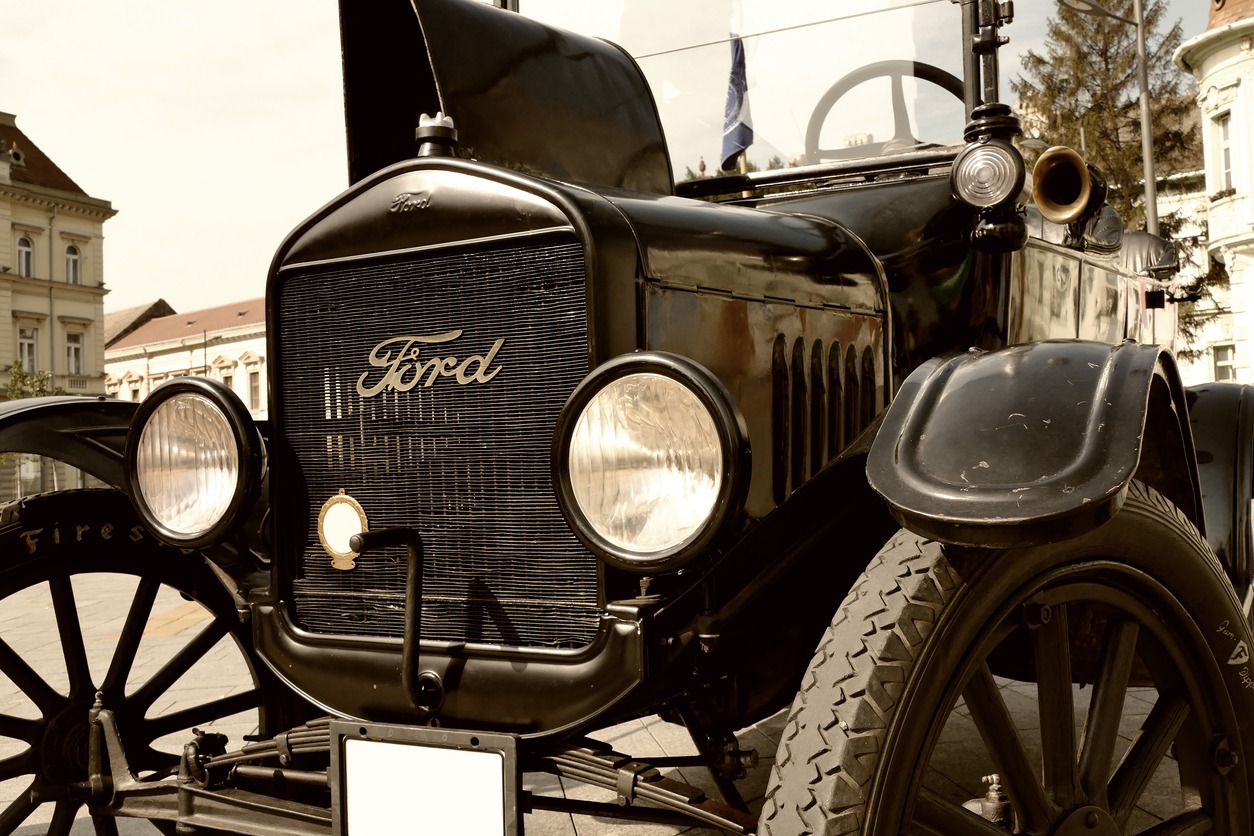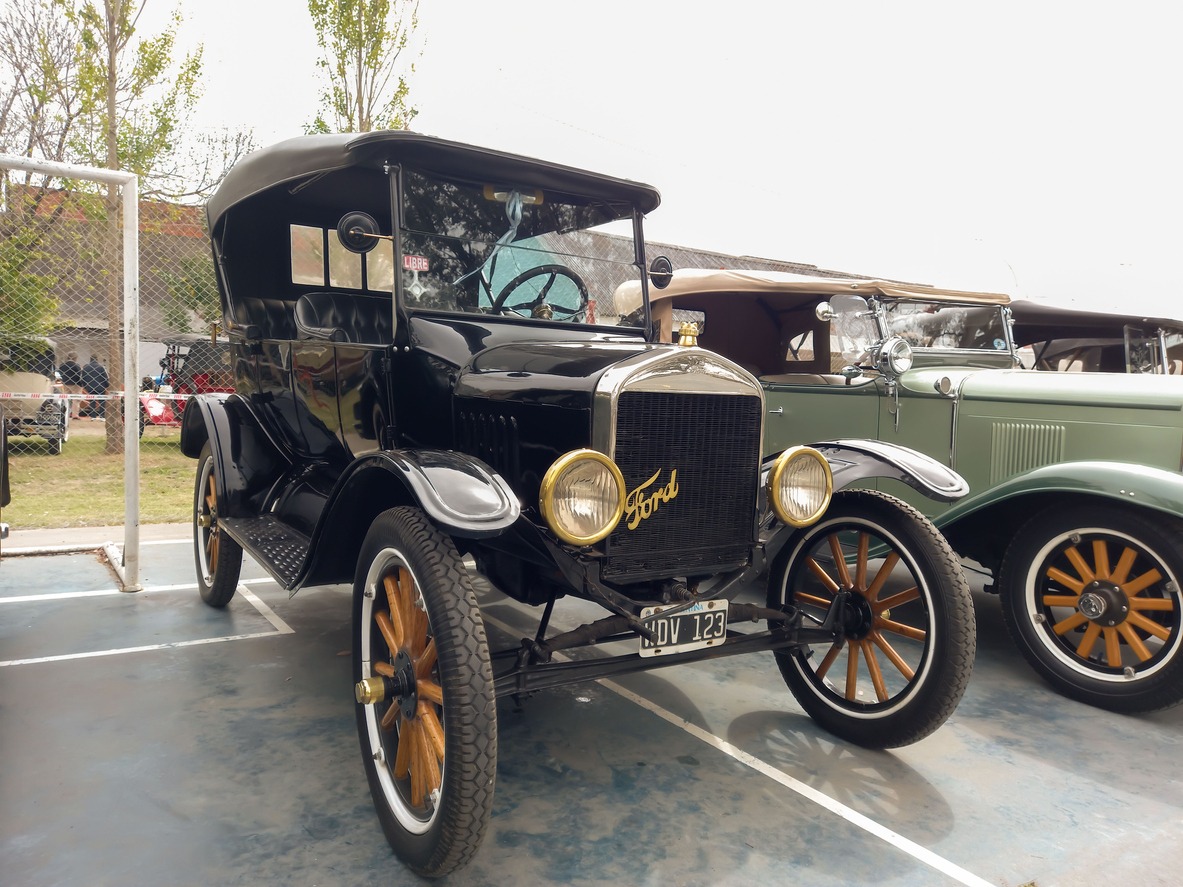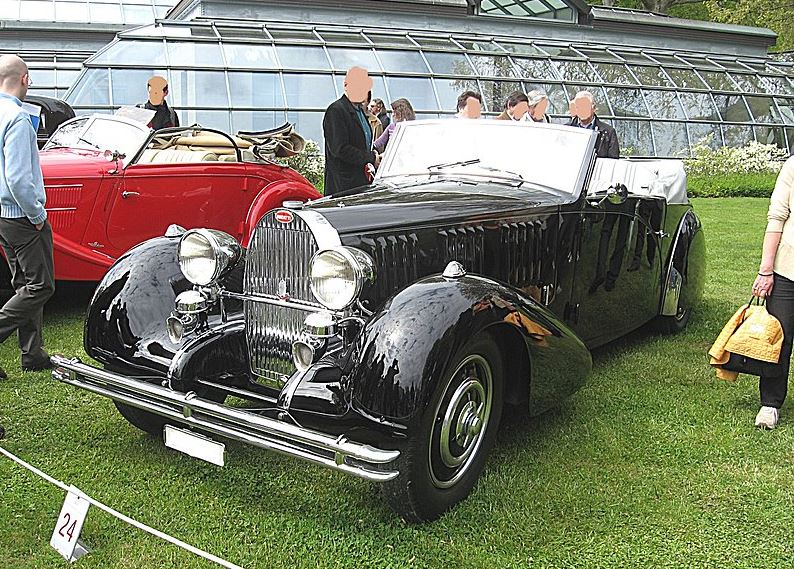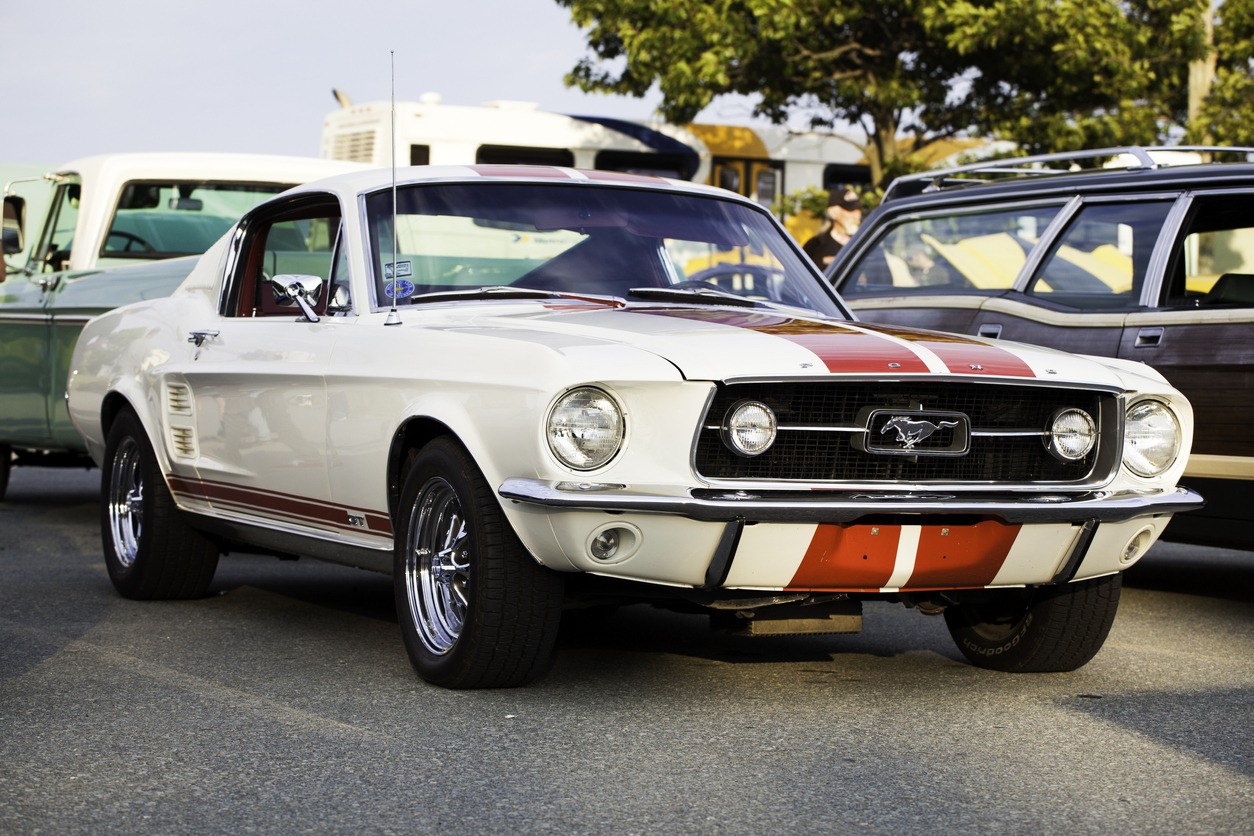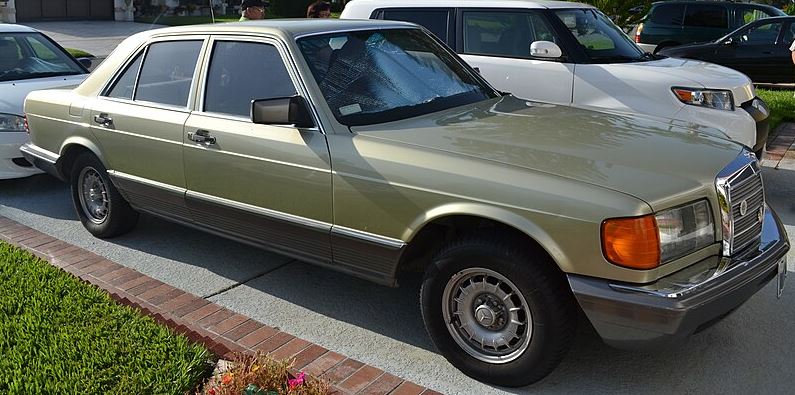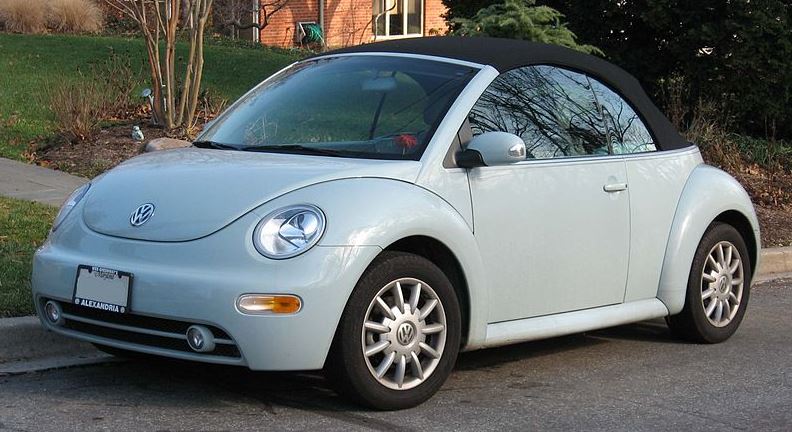Car design is often a story of evolution, each year bringing subtle changes and new trends that shape our vehicles. The way cars look today is vastly different from those of 20 years ago and even more so from the cars 50 or 60 years ago.
Remember when cars were all about swooping lines, tailfins, and a whole lot of chrome? Then came the era of muscle cars, with their roaring engines and assertive designs. After that, car design went through various phases, from the less flamboyant designs of the second barge era to the smooth, rounded looks of the 90s, the quirky styles of the mid-2000s, and the more standardized designs of today.
The Early Years (1900-1920)
In the early years of the automobile industry, the earliest cars looked like horse-drawn carriages, simply equipped with engines. These initial designs were more about function than form, lacking in both aesthetics and aerodynamics. The engines were usually located under a bonnet at the front of the car; the bodywork was rudimentary, with open tops and minimal weather protection. Braking systems were primitive, and the steering mechanism was often a tiller.
People in the early 1900s saw cars as basic modes of transport, prioritizing practicality over style. However, as cars gained popularity, a shift towards prioritizing design and aesthetics began to emerge.
During this transformative period, the influence of the Art Nouveau movement was evident. This artistic trend, known for its organic shapes and flowing lines, left its mark on the automotive world. Many early cars from this era were adorned with elaborate ornamentation and decorative flourishes. Luxury vehicles often featured ornate grilles and hood ornaments, showcasing intricate detailing and craftsmanship.
Notable Models That Defined This Era
- The Ford Model T: Introduced by Henry Ford in 1908, the Model T revolutionized car manufacturing through its affordability and simplicity. It was the first car to be mass-produced using an assembly line, drastically reducing its cost and making automobile ownership accessible to the masses.
- Mercedes Simplex: Designed by Wilhelm Maybach in the early 1900s, the Mercedes Simplex was a significant step forward in automotive design. It featured a lower center of gravity and a more powerful engine, setting new standards for car performance and design.
The Art Deco Era (1920s-1930s)
The 1920s, known as the Roaring 20s, marked a significant shift in car design, reflecting the era’s economic prosperity and people’s growing desire for style and luxury. This period witnessed the rise of design movements like Art Deco, which profoundly influenced various industries, including automotive design. Art Deco, drawing inspiration from industrial aesthetics, championed clean lines, geometric features, and a streamlined look, marking a departure from the previously utilitarian car designs.
Cars began to exhibit a blend of straight lines and rounded corners, moving away from the purely functional designs of the past. This era’s design ethos emphasized style and luxury, with the Art Deco movement bringing sophisticated and clean aesthetics to car designs. However, the high cost of these stylish cars limited their availability, and such trends were primarily concentrated in urban areas. Despite the elegant designs, this period saw limited technological advancements in car design.
Streamlining became a key design principle in the 1920s and 1930s, heavily influenced by advancements in aerodynamics. Designers and engineers began to understand the importance of aerodynamics for improving speed and efficiency, leading to more fluid, streamlined car designs. The rapidly advancing field of aviation, in part, inspired this. Cars started to feature smoother lines, with curved fenders and aerodynamic contours, reducing drag and enhancing performance.
The shift to streamlined shapes also represented a departure from purely decorative elements, focusing instead on form following function. Cars were designed to cut through the air more efficiently, leading to designs that were not only aesthetically pleasing but also technologically advanced for their time.
The Great Depression of the 1930s also influenced car design significantly. In an effort to create more fuel-efficient and cost-effective vehicles, manufacturers embraced aerodynamic principles inspired by the aviation industry. Cars began to exhibit slanted grilles, bullet-shaped headlights, and flowing fenders, transitioning from tall, boxy designs to more streamlined shapes. This focus on aerodynamics was driven by a desire for efficiency and speed despite the limited availability of streamlined cars due to manufacturing constraints and a lack of significant technological advancements in engines and other mechanical aspects. The economic challenges of the era posed additional barriers to the widespread adoption of these new designs.
Notable Models That Defined This Era
- 1936 Bugatti Type 57SC Atlantic: This car is often regarded as one of the most beautiful and elegant cars ever made. It’s the quintessential example of Art Deco elegance in automotive design – featuring flowing lines, a pronounced riveted spine, and a teardrop shape. The use of magnesium for its body panels made it lightweight and avant-garde.
- 1938 Buick Y-Job: Created as a concept car, the Buick Y-Job was ahead of its time with features like integrated fenders, hidden headlamps, and a low profile. It showcased what was possible in terms of integrating streamlined design with functional automotive technology.
- 1937 Delahaye 135MS Roadster: Known for its extravagant bodywork, the Delahaye 135MS featured dramatic curves, long fenders, and a low, rakish profile. It was a car that combined high performance with high style, embodying the spirit of the Art Deco era.
Post-War Design Boom (1940-1950s)
The immediate post-war years were a time of transition in car design. During World War II, automotive production had shifted to support the war effort, but the post-war era brought about a new revolution in car design.
As the economy recovered and consumer demand increased, car manufacturers shifted their focus to creating vehicles that were not only functional but also stylish and appealing. This era saw the introduction of new design elements, including more streamlined shapes, luxurious interiors, and advancements in automotive technology.
The introduction of pontoon styling, which encased cars’ full width and length, marked a departure from the distinct running boards and articulated fenders of previous designs. Influenced by contemporary trends in urban planning, architecture, and art – pontoon styling represented a sleek and integrated look that laid the foundation for modern car design.
One of the most notable changes was the move towards larger, more powerful vehicles. Cars became bigger and more robust, with larger engines and more spacious interiors. This was a time when the American love affair with the automobile really took off, with cars becoming a symbol of status and freedom.
The 1950s, in particular, were known for the introduction of bold design elements. Chrome became a dominant feature in car design, used liberally on grilles, bumpers, and other trim pieces. It gave cars a flashy, glamorous look that was very much in line with the optimistic spirit of the times.
Tailfins were another iconic design element of this era. Inspired by the jet aircraft of the time, tailfins gave cars a futuristic and dynamic appearance. They started modestly in the late 1940s but grew in size and extravagance through the 1950s. The tailfin craze reached its peak towards the end of the decade, with some models featuring fins of considerable height and complexity.
Bright, bold colors also became popular during this period. Unlike the more subdued hues of the pre-war years, the post-war era saw cars painted in vibrant blues, greens, reds, and even pastel shades. This use of color not only made cars more visually appealing but also allowed for a greater expression of individuality and personal style.
Notable Models That Defined This Era
- 1953 Chevrolet Corvette: As America’s first sports car, the Corvette was a departure from the large, heavy cars of the era. It featured a fiberglass body, a novel material at the time, and was designed for performance and style.
- 1957 Chevrolet Bel Air: The Bel Air is one of the most iconic cars of the 1950s. Known for its chrome trim, tailfins, and two-tone paint jobs, it epitomized the era’s design ethos. It was stylish, flashy, and symbolized the optimism of post-war America.
- 1959 Cadillac Eldorado: This model took the tailfin to its extreme, with the tallest tailfins ever seen on a production car. The Eldorado’s design was extravagant, with a lot of chrome and sleek lines, embodying the luxury and excess of the era.
- 1955 Ford Thunderbird: The Thunderbird was Ford’s answer to the Chevrolet Corvette. It featured a two-seater design, a V8 engine, and elegant, sporty styling. It was less about flamboyance and more about sophisticated style.
Muscle Cars, Space Age and Modernist Movement (1960s-1970s)
During the 1960s and 1970s, there was a need for speed. People wanted cars that had high performance, powerful engines, and exciting designs.
In the American automotive market, muscle cars were born to fit this demand. The muscle car era was a period of rapid innovation in car design, with a focus on performance, style, and technology. Muscle cars like the Chevrolet Camaro, Ford Mustang, and Dodge Challenger were equipped with large V8 engines, necessitating larger hoods and grilles for a more aggressive appearance. The introduction of advanced suspension systems was crucial to handle the power of these large engines, enhancing handling and traction.
Muscle cars often featured bold, striking colors and distinctive striping, adding to their eye-catching appearance. Hood scoops and spoilers were common, not just for their aesthetic appeal but also for their functional role in improving airflow and vehicle stability at high speeds. While not always luxurious, the interiors of these cars were designed with a sporty feel, often featuring bucket seats and floor shifters to enhance the driving experience.
These muscle cars mostly appealed to younger drivers who craved speed and excitement, leading to intense competition among American automakers to produce the most powerful and fastest cars.
The 1960s were also an exciting time for the whole world as space exploration led by NASA inspired many. During this period, even carmakers incorporated this space craze, featuring unconventional shapes, sharp angles, and futuristic lines in their cars.
The era also saw a shift towards modernism in car designs. Those who are not a fan of muscle cars prefer clean lines and simplicity. This design approach was a departure from the ornate and excessive styling of the 1950s, moving towards elegance and sophistication. However, this design trend faced challenges due to limited availability in the mass market and ongoing issues with fuel efficiency.
Due to the oil crisis of the ’70s, manufacturers focused on fuel efficiency and emissions control. This period saw a return to more conservative, boxy designs, with a focus on aerodynamics to improve fuel efficiency.
Notable Models That Defined This Era
- Pontiac GTO (1964-1974): Often credited with starting the muscle car trend, the GTO featured powerful engines and sporty, aggressive styling.
- Ford Mustang (1964-1973): Often considered the quintessential American muscle car, the Mustang debuted in 1964 and quickly became a symbol of power and freedom. Its long hood, short deck, and aggressive styling made it an instant classic.
- Chevrolet Camaro (1967-1969): Introduced as a competitor to the Ford Mustang, the Camaro became famous for its powerful engines and sporty design. It was a crucial player in the muscle car era.
- Jaguar E-Type (1961-1975): Known for its beauty and high performance, the E-Type was a British sports car that became an icon of 1960s style and engineering excellence.
- Porsche 911 (1964-present): The Porsche 911, introduced in the 1960s, set new standards for sports cars with its distinctive design and rear-engine layout. It’s known for its unique silhouette and performance.
- Lamborghini Countach (1974-1990): Known for its radical styling with sharp angles and scissor doors, the Countach was a supercar that became a poster favorite for many automotive enthusiasts.
- Plymouth Hemi’ Cuda (1970-1971): A high-performance variant of the Barracuda, the Hemi’ Cuda was famous for its powerful Hemi engines and is now a highly sought-after collector’s item.
- Ferrari 365 GTB/4 “Daytona” (1968-1973): Though it debuted in the late 60s, the Daytona became one of the definitive sports cars of the 70s, known for its sharp, angular design and powerful V12 engine.
- Chevrolet Corvette Sting Ray (1963-1967): This car is a prime example of space-age design, with its bold colors, sharp angles, and futuristic styling cues. The car’s split rear window and long, pointed hood with a “power bulge” showcased its aggressive and sporty design, while its stylish interior and advanced features set a benchmark for American sports cars.
Emphasis on Luxury and Comfort, Tech Revolution, and Japanese Sports Car Era (1980s-1990s)
The 1980s was a period of economic prosperity, and this was reflected in the automotive sector through an increased demand for luxury vehicles. Car manufacturers responded by focusing more on the quality of the interior, the comfort of the ride, and the overall aesthetic appeal of the car.
This era saw a surge in the use of high-quality materials like leather, wood trim, and plush carpets in car interiors. The design philosophy shifted from the utilitarian and sporty to the opulent and comfortable.
Cars became larger and more spacious, with a focus on providing a smooth and comfortable driving experience. This was achieved through improvements in suspension systems, noise insulation, and the introduction of features such as power-adjustable seats, climate control, and sophisticated sound systems. The exterior designs of luxury cars in the 1980s were characterized by a blend of traditional elegance and modernity, with sleek lines, refined detailing, and an imposing presence.
The 1980s was also an era that witnessed the integration of advanced technology in car design – not just under the hood but also in the overall aesthetics and functionality. This included the introduction of electronic features such as digital dashboards, on-board computers, and advanced navigation systems.
There was also a focus on aerodynamics, which influenced car shapes to be more streamlined and fuel-efficient. Influenced by aviation and space exploration styles, this era introduced sleek and angular designs in cars.
Car manufacturers began experimenting with innovative materials and techniques, such as anti-lock braking systems (ABS), fuel injection, and turbocharging. The use of technology extended to safety features, with advancements in airbag systems and improved structural designs for better crash protection. Japanese manufacturers rise to prominence in the high-performance sports car segment, challenging their European and American counterparts. The era was notable for its introduction of cutting-edge materials and technology in automotive design.
Lastly, the period also saw Japanese manufacturers rise to prominence in the high-performance sports car segment, challenging their European and American counterparts. The era was notable for its introduction of cutting-edge materials and technology in automotive design.
Notable Models That Defined This Era
- Mercedes-Benz S-Class (W126): Introduced in the early 1980s, the W126 model of the Mercedes-Benz S-Class was a symbol of luxury and technological innovation. It featured a sleek, aerodynamic design, a spacious and luxurious interior, and advanced safety features like ABS and airbags.
- BMW 7 Series (E32): Launched in 1986, the BMW 7 Series was at the forefront of technological innovation. It was one of the first cars to offer electronic damper control and a complex climate control system. Its design was modern yet elegant, with a focus on comfort and a high-quality interior.
- Jaguar XJ: The Jaguar XJ series in the 1980s continued to uphold its reputation for elegance and luxury. With its classic design, featuring the iconic Jaguar grille and sleek lines, the XJ series boasted luxurious interiors and a smooth ride quality.
- Lexus LS 400: Debuting at the end of the 1980s, the Lexus LS 400 set a new standard for luxury cars. It combines a refined and elegant design with exceptional build quality, a quiet and comfortable interior, and a host of innovative technology features.
- Ford Taurus: Another standout example from the 80s period is the 1984 Ford Taurus, which epitomized the aerodynamic approach with its streamlined design, moving away from the rounded and bulky shapes of previous decades to sharper angles and clean lines.
- Toyota Supra (Third Generation): Produced from 1986 to 1992, is a prime example of Japanese automotive prowess during this era. The Supra’s design blended elegance and aggression, illustrating the integration of aerodynamic design with advanced technology. It remains an iconic figure in the world of sports cars today.
Retro Revival and Modern Classics Era (1990s-2000s)
The design trend in the auto industry during the 90s was particularly intriguing: the retro revival. This era marked the return of iconic design elements from the past, melded with modern technology and engineering. Manufacturers began to rediscover and re-implement classic designs, creating vehicles that were nostalgic yet advanced. It combined the allure of history with contemporary performance and comfort. If you want to know how classic cars compare to modern counterparts, read here.
This trend was driven by a growing consumer interest in nostalgia and a desire for vehicles with unique, standout aesthetics. Automotive designers delved into their brands’ histories, drawing inspiration from successful models of the past. However, these retro-styled cars were not mere replicas; they were modern reinterpretations that blended timeless design cues with the latest advancements in automotive technology.
The appeal of retro-styled modern cars lies in their ability to evoke memories and emotions associated with the golden eras of motoring while still providing the reliability, safety, and performance expected of a contemporary vehicle. These cars often featured design elements like round headlights, classic grille patterns, and body shapes reminiscent of the styles of the past, coupled with modern materials, engines, and electronic systems.
One of the main challenges for automakers during this period was balancing the aesthetic appeal of classic design elements with the demands of modern technology and contemporary standards. This balance was achieved through innovative engineering and design. Modern safety standards, emission controls, and consumer expectations for comfort and connectivity were all integrated seamlessly with retro-inspired aesthetics.
A technological revolution in car design also characterized the 1990s and 2000s. During this period, the SUV became increasingly popular. These vehicles combined the practicality of a truck with the comfort of a car, catering to the growing demand for versatile and family-friendly vehicles.
This decade was also a time for modern supercars to shine along with their extraordinary innovation and style. Carmakers used advanced materials like carbon fiber composites to create light yet strong car structures. The use of CAD software and 3D printing technologies allowed designers to push the boundaries of car design with complex, aerodynamic shapes.
Wind tunnel testing and computational fluid dynamics became crucial in optimizing car designs for performance, resulting in sleek, flowing lines and large rear wings for enhanced aerodynamics. Supercars of this era often featured a wedge-shaped profile with a low, sloping hood and a high, angular tail, embodying an extravagant and flamboyant design language.
Notable Models That Defined This Era
- Volkswagen New Beetle (1997-2011): The New Beetle was a modern take on the iconic VW Beetle. Its design captured the essence of the original with its round shape, curving lines, and distinctive headlamps, but with a front-engine, front-wheel-drive layout and modern amenities.
- BMW MINI (2000-present): The MINI, a revival of the classic Mini Cooper, successfully combined its famous compact design and sporty demeanor with BMW’s engineering and technology. It retained the classic Mini’s playful and distinctive appearance while offering modern performance and luxury.
- Ford Mustang (2005-present): The fifth-generation Mustang took inspiration from the Mustangs of the 1960s, particularly the 1967 model. It featured a retro-futuristic design with a long hood, short deck, and classic Mustang styling cues, paired with modern engineering and technology.
- McLaren F1 (2992-1998): The McLaren F1 was a pinnacle of the modern supercar era. Its design focused on minimizing drag and maximizing downforce, featuring a distinctive pointed nose, a teardrop-shaped body, and innovative gull-wing doors. The carbon fiber monocoque chassis and central driving position were revolutionary, making the F1 an icon of automotive design.
- Toyota RAV4 (First Generation, 1994-2000): The RAV4 was one of the first compact crossover SUVs, offering the practicality of an SUV with the driving dynamics of a car.
- Mercedes-Benz M-Class (W163, 1997-2005): As one of the first luxury SUVs, the M-Class combined off-road capability with Mercedes-Benz luxury, appealing to a growing market.
Conclusion
The evolution of car design from the 1990s to the 2000s has been a remarkable journey of innovation. It does not only reflect the technological and aesthetic trends of their times but also continues to influence the design and functionality of cars today. As we look back at these iconic models, it’s clear that the evolution of car design is proof of the automotive industry’s capacity for creativity and adaptation.
